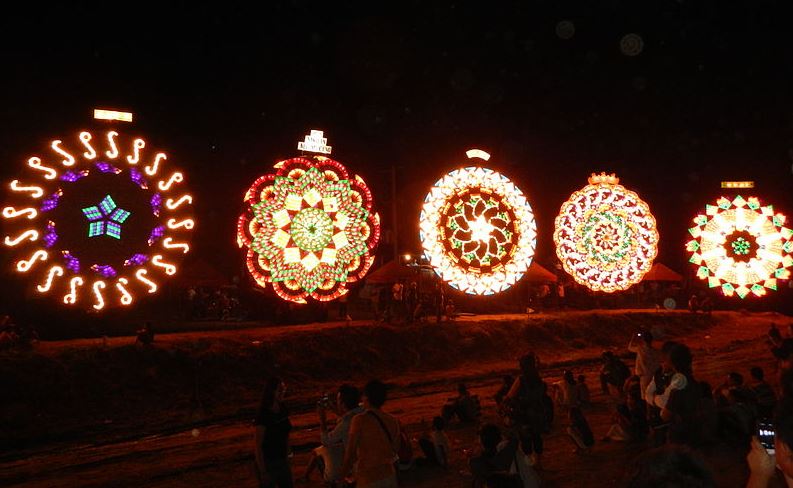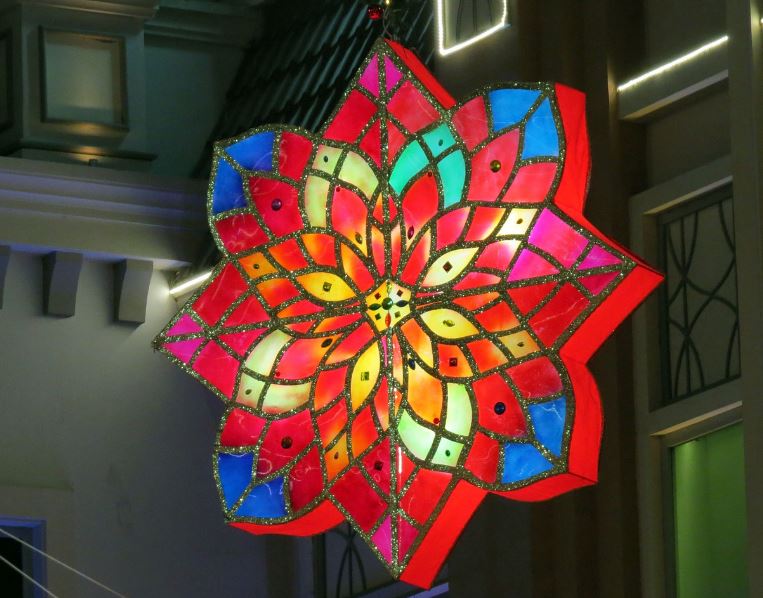In other countries, the Christmas season usually begins late in the November or in the start of December. However, when it comes to the Philippines; you will begin hearing Christmas melodies and start seeing decorated houses as early as September.
One of the widely used and most common decoration seen in the Philippines is the parol. It is present in almost every house, building and public place during that time. These Christmas celebrations also includes a Giant Lantern Festival, which is popular throughout the World for all the right reasons.
You might be wondering what is parol? Why is it important? What is the history behind it? And how parol is related to the Lantern Festival Philippines in any way? Read on to get your answers in details.
How Do You Describe a “parol”?
Parol is derived from a Spanish word farol that means light or lantern. It would be fair to say that Parol is Philippine’s hallmark to showcase Christmas spirit. Basically, it is a star-shaped lantern, which signifies the star of Bethlehem that guided the Three Kings to find Jesus Christ’s manager. Being a native Christmas ornament in the Philippines; a festival of Parol takes place in December every year on Saturday right before Christmas Eve. The festivity is named as Giant Lantern Festival, and it is held in Pampanga, the City of San Fernando.
Kapampagan: Ligligan Parul (official name of Giant Lantern Festival) is enjoyed in mid-December, and features parol lantern competition. Due to the popularity of this event; San Fernando is also known as the Christmas Capital of the Philippines.
Background of Giant Lantern Festival
The modern-day Lantern Festival was basically a religious thing known as lubenas today. Earlier, the lanterns used to measure only two feet in diameter. However, today it is a pleasure to see illuminants that are as big as fifteen feet, scattered all over the sky.
In the past, lanterns were created by using bamboo or other local materials available in the market. Before the midnight of Christmas Eve, these lamps were gathered in the town church along with the barrio patrons. Gradually, the tradition evolved, and the size of lanterns became bigger with intricate designs and patterns. Later, just one big lamp was constructed for each barrio through a cooperative effort, and each resident had to contribute to its making in terms of design, concept, material and labor. Hence, these illuminants became the symbol of hope and unity for barrios.
The Very First Lantern Festival in the History of Philippines
The first ever lantern festival was celebrated in the honor of President Manuel L. Quezon for converting Mount Arayat into a resort for tourists, and making Arayat his rest area. The purpose of the event was to show gratitude towards Quezon. The locals of San Fernando also conducted a lantern contest to regard the first family. However, the President chose to donate the prize, which was given to the winner by Aurora Aragon Quezon, the First lady.
Due to the proclaimed Martial Law in the country, the event was cancelled for three consecutive years, 1972, 1973 and 1974. However, when the festival was observed after the break, a lot of innovations were introduced in the design and style of lanterns. Traditional papel de hapon were replaced by colored plastic, and it remained there until 2010. Later, handmade paper and fiberglass were seen on the lamps. Moreover, large steel barrels, also known as rotors, replaced the hand-controlled switches. Furthermore, new trends and improvements were added every time to further enhance the experience of the celebrations.
Importance of Lights and Lanterns in The Philippines
Over the past years, disco lights were also seen on the Giant Lanterns to add light and attraction to the structure. People usually wonder why lights and lanterns are admired throughout the Philippines? The truth is; Filipinos give much importance to the parol and regard it as a symbol of hope and light in the predominantly Christian country.
The Evolution in The Making of Lanterns
Japanese paper and Bamboo have been used in making the parols for many years. Typically, they were lit with oil and candles or carbide lights. With the passage of time, modern parols were introduced, and several materials were utilized in their making, like metal, plastic, capiz shells, etc. They were generally connected with electricity supply for illumination. A number of shapes and designs were seen throughout the celebrations over the years, but the 5-pointed star shape remained the constant one.
Disc-shaped, large electronic parols were produced in Pampanga named as Parul Sampernandu. Later, a steel frame was welded together to use as a lantern instead of bamboo. Once basic structure of the frame was created, cardboard and foil were used to line it. Certainly, the process was long, and it required massive labor for installing more than 5,000 light bulbs and wiring them properly in their positions using a hundred yards of electric wire.
In order to regulate lights; rotors were installed rather hand-controlled switches. Moreover, masking tape strips were used to establish lighting sequence on the rotors.
What is the Color of Giant Lantern?
Giant Lanterns comes in different shades of colors, like blue, yellow, red, purple and more, depending on the choice of people who are making it. There is absolutely no hard and fast role about the choice of color palettes.
Some Facts and Traditions of Lantern Festival in the Philippines
- People from all over the country can participate in the competition held in the Giant Lantern Festival by creating innovated and unique lanterns.
- Filipinos natives are always eager to contribute to the process of the giant lantern making.
- People come to visit the festive location along with families to enjoy their Christmas holidays.
- The event is broadcasted live on the TV so that people, who are unable to join the celebrations for whatsoever reason, can still become a part of it.
- Before the Christmas Eve, a procession is held in which lanterns are displayed.
- After the procession, the lamps are placed in the church.
- Philippines is one such country in which the Christmas season is celebrated for the longest time.
- It is not a surprise that several cities, towns and localities arrange lantern festival on their own. Hence, the celebrations are widespread across numerous cities of the Philippines, including the islands outside Luzon.
- Furthermore, way before the actual event of Christmas Day; illuminated streets and giant lanterns hanging all around the plazas and public places are already apparent.
Dates To Observe Giant Lantern Festival in Coming Years
Are you planning to become a part of the Giant Lantern Festival in coming years? Well, it is always a great idea to know the dates before traveling to take leaves from work in advance. To save your time; we have made a chart with all the detailing you would need to plan your holiday trip. Have a look.
| Date | Year | Day | Holiday |
| 5 February | 2023 | Sunday | Lantern Festival |
| 24 February | 2024 | Saturday | Lantern Festival |
| 12 February | 2025 | Wednesday | Lantern Festival |
| 3 March | 2026 | Tuesday | Lantern Festival |
| 20 February | 2027 | Saturday | Lantern Festival |
| 9 February | 2028 | Wednesday | Lantern Festival |
Final Words
Christmas is the time of celebrations throughout the World, and different countries welcomes it distinctively. When it comes to the Philippines; the country is popular for starting the preparations way earlier than the big day. From decorations to preparations; everything starts a few months prior to the Christmas Eve. It is nearly impossible to think of any other iconic Christmas symbol than parol or star lantern in the Philippines, the Giant Lantern Festival is the true example. The sign is handcrafted, vibrant and beam with holiday cheer.
It all started to honor the President Manuel L. Quezon and is still celebrated with full enthusiasm. Today, apart from natives, people from all over the world travel to the Philippines to participate and enjoy the event. The festive is broadcasted live via Central Luzon Television, so those who can’t attend won’t miss out anything. If you wish to visit Philippines any time in the future, it is highly suggested to travel during the Giant Lantern Festival to get the most out of your vacations.




